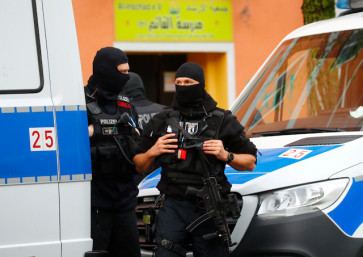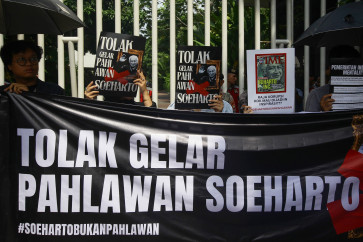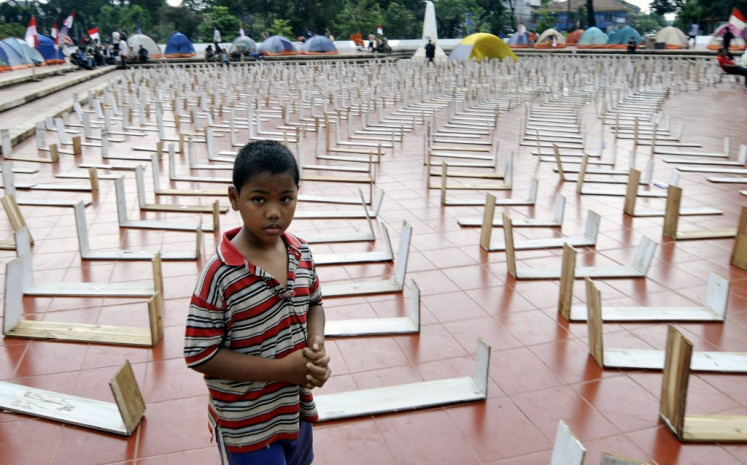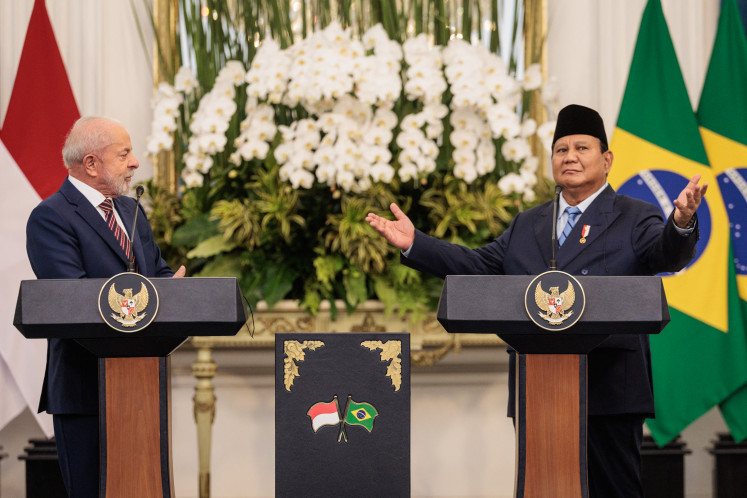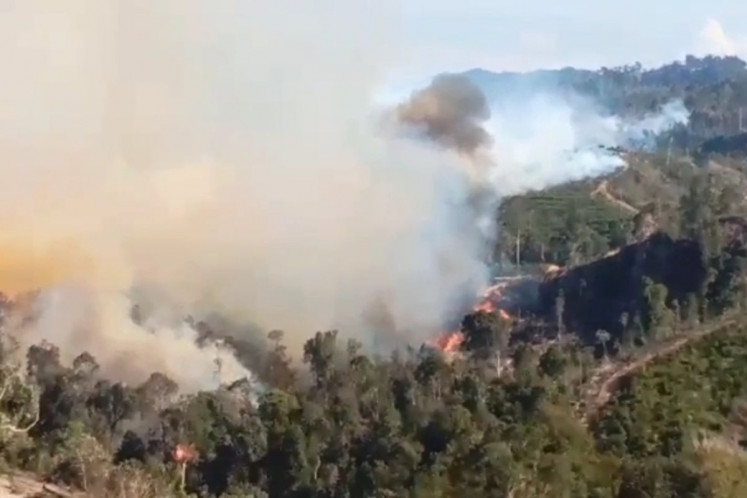Popular Reads
Top Results
Can't find what you're looking for?
View all search resultsPopular Reads
Top Results
Can't find what you're looking for?
View all search resultsBogor city, regency root for new Greater Bogor province
An old idea of a new province separate from West Java called Bogor Raya (Greater Bogor) has resurfaced following a proposal initiated by the Bogor city and Bogor regency administrations in their attempt to manage accelerating development
Change text size
Gift Premium Articles
to Anyone
A
n old idea of a new province separate from West Java called Bogor Raya (Greater Bogor) has resurfaced following a proposal initiated by the Bogor city and Bogor regency administrations in their attempt to manage accelerating development.
Bogor Mayor Bima Arya Sugiarto said he would continue to mull over the idea of establishing a new province and invite healthy public discussions, as well as studies conducted by universities.
The idea for a Bogor Raya province first took root in the 1990s, when several areas under the authority of Bogor regency were administratively moved under Bogor city, which needed more space for its growing population.
“Now, we also need to anticipate [overcrowding], because in 10 years, the population of Bogor city may grow to 1.5 million people; we need to have a study on that,” Bima said on Wednesday.
The city administration is currently studying four scenarios: a regional expansion to Bogor regency, establish a new province, a merger between the Bogor administration and Jakarta administration or improving communication and coordination across cities without any changes in their administrative status.
“We want to boost the area to support a growing population and an integration with Greater Jakarta,” Bima said.
Several cities have reportedly suggested to include in the new province Bogor municipality, Bogor regency, Bekasi municipality, Bekasi regency, Sukabumi municipality, Sukabumi regency, Cianjur, Depok, Karawang and Subang.
Bogor Regent Ade Yasin was the first to revive the idea after disapproving of Bogor city’s plan to expand its area.
“I would agree to the possible establishment of a new province, but I won’t allow areas of Bogor regency to be claimed [by the Bogor city administration],” she said on Wednesday as reported by Antara.
She said she would meet with Bima to discuss the future of the two administrative regions.
Ade further explained that the suggestion for Bogor Raya province also emerged following a plan to divide Bogor regency into two autonomous areas, namely West Bogor and East Bogor. The former is waiting for the central government to verify its status, while the latter’s is currently being discussed by the West Java provincial administration.
Some leaders from the proposed regions, like Bekasi and Depok, have rejected the establishment of Bogor Raya, saying it would be more beneficial for them to join the Jakarta administration or stay within West Java.
Bekasi Mayor Rahmat Effendi argued that the satellite city had more in common with Jakarta, historically and culturally, than with Bogor. Furthermore, the option to merge with Jakarta would likely accelerate development in Bekasi, he said as quoted by tempo.co.
Meanwhile, Depok Mayor Mohammad Idris said Bogor leaders should have completed their proposal for internal autonomous regions before going further with deliberations over a new province.
West Java Governor Ridwan Kamil said it was pressing for the province to have more administrative regions. West Java is the most populous province in the country, with 50 million residents and 27 regencies and municipalities combined. He cited East Java province, which is home to 40 million people but has 38 autonomous regions. West Java should ideally have 40 administrative regions, he said as reported by tempo.co.
The notion came amid moratorium of establishment for a new autonomy region imposed by central government since 2014 until an unspecified period of time.
The central government issued a moratorium for the establishment of new autonomous regions in 2014. It last approved the regional expansion of North Kalimantan in 2012, when the province was given areas that were under East Kalimantan’s administration.
“The central government’s current policy is Indonesia-centric, [but] problems linger in some regions and they need to be solved […] For the public, the solution is not to change an area’s administrative status but to improve its public services,” Home Ministry spokesman Bahtiar told reporters on Wednesday.
Regions supporting a new administrative status mostly argued that they lacked public services, Bahtiar said. However, he asserted that the ministry’s evaluation indicated that not all of the new administrations had successfully provided adequate public services.
“So, dividing or merging regions is not always the answer. Integrating management or public services across administrations could also be an answer,” he said.
Regional administrations seeking to propose the establishment of a new region must file a request to the Home Ministry along with several required documents, including an approval letter from mayors, regents and councillors from the affected regions, he said.
The ministry would then forward the request to the House of Representatives and Regional Representatives Council. Once approved by legislatures, an independent team would assess whether the proposed region was worth expanding or merging.
This study would be used as a basis for approving a “preparative region” led by an appointed civil servant for three years before it can be officially defined as a new autonomous region.
Bahtiar explained that the ministry’s regional autonomy directorate general has received 315 request letters as of Wednesday. However, no action has been taken because of the government moratorium.
Besides the readiness of the new region, its fiscal ability is another aspect that must be taken into account, he said, adding that one preparative region requires Rp 300 billion (US$21 million) to Rp 500 billion a year to prepare new government offices and other establishments.



